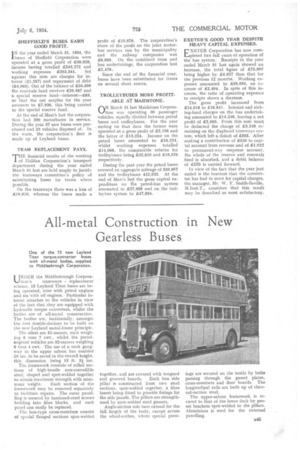All-metal Construction in New Gearless Buses
Page 63

If you've noticed an error in this article please click here to report it so we can fix it.
I TM/ER the Middlesbrough Corpora tion's tramways replacement scheme, 15 Leyland Titan buses are being operated, nine with petrol engines and six 'with oil engines. Particular interest attaches to the vehicles in view of the fact that they are equipped with hydraulic torque converters, whilst the bodies are of all-metal construction. The bodies are, incidentally, amongst the first double-deckers to be built on the new Leyland metal-frame principle.
The oilers are 61-seaters, each weighing 6 tons 7 cwt., whilst the petrolengined vehicles are 52-seaters weighing 6 tons 4 cwt. The use of a sunk gangway in the upper saloon has enabled -10 ins. to be saved in the overall height, this dimension being 13 ft. 3i ins.
The framework consists of rolled sections of high-tensile non-corrodible steel, shaped and spot-welded together to obtain maximum strength with mini mum weight. Each section of the framework may be removed separately to facilitate repairs. The outer panelling is secured by hardened-steel screws bedding into fibre blocks, and each panel can easily be replaced.
The box-type cross-members consist of special flanged sections spot-welded together, and are covered with tongued and grooved boards. Each box side pillar is constructed from two steel sections, spot-welded together, a fibre insert being fitted to provide fixings for the side panels. The pillars are strengthened by spot-welded steel gussets.
Angle-section sole bars extend for the full length of the body, except across the wheel-arches, where special press ings are secured on the inside by bolts passing through the gusset plates, cross-members and floor boards. The longitudinal rails are built up of channel-section steel.
The upper-saloon framework is secured to that of the lower deck by gusset brackets spot-welded to the pillars. Aluminium is used for the external panelling.




































































































